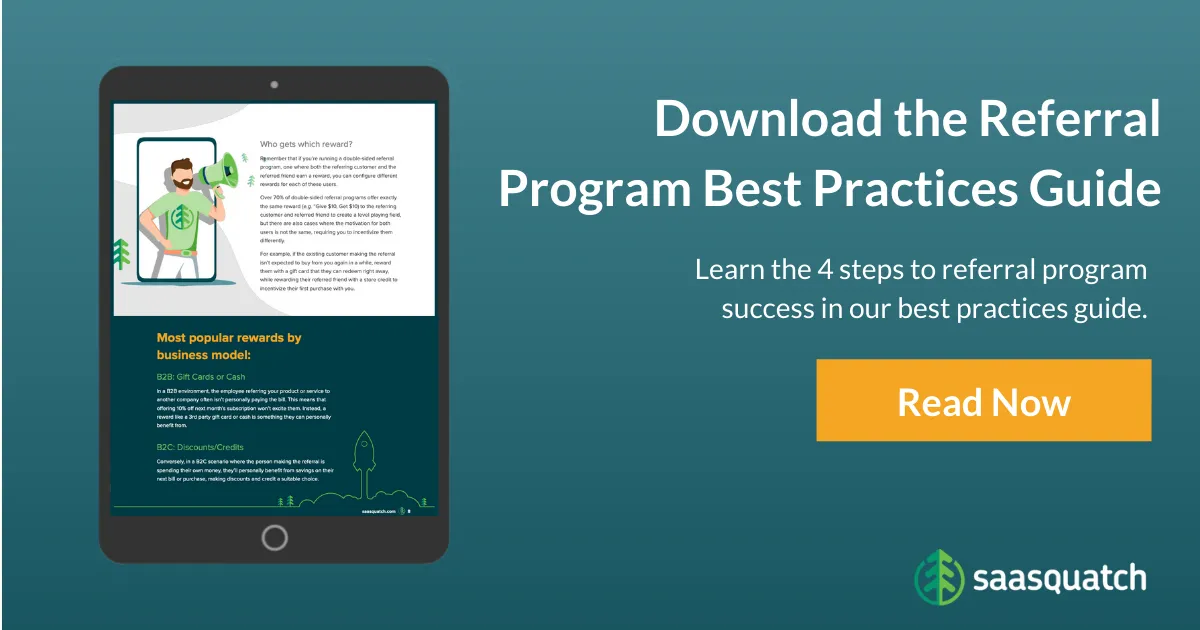A Guide: Key Steps for Switching to a New Referral Platform
There are many reasons why you may want to consider switching referral platforms. Whether you want to start expanding your programs, your current vendor is no longer offering the support you need, you're running manual programs that you want to automate, or you have a home-grown legacy system that you no longer want to spend the development resources it takes to maintain.
With every scenario, the thought of a migration can sound daunting, but it doesn’t have to be. In this article, we’ll guide you through the migration process and reveal key tips and pitfalls you need to be aware of to make the process as smooth as possible.

Step 1 - Make a plan as early as possible
This may seem obvious, but is a crucial step to your success. Determine the key dates you want to perform the migration. There are likely dates that you must ensure your referral program is ready for, or times when your resources for the project may be constrained. With those dates in mind, pick your ideal launch date then work backwards from there.
Depending on the scale and complexity of your programs, we find the average time it takes to completely switch referral platforms is about 4-6 weeks from the date you secure a new vendor. If your team is agile and your internal resources are aligned, this will help ensure a smooth process. Just make sure you give yourself enough time to complete a thorough migration to set your project up for success.
Pitfall: Not including your stakeholders early enough.
What can slow down your timeline is not including the right people at the right time. Getting stakeholder buy-in early can not only ensure your project stays on track, but can also lead to more successful programs in the long run. We’ve found the most successful projects include an executive sponsor and a representative from:
- customer or growth marketing,
- marketing operations, and
- product management.
Making this part of step one will prevent you from having project stalls while one or more teams have to review and approve. As a bonus, you will build stronger internal alignment.
Step 2 - Inventory what you want to move over
Next you will need to inventory the program elements you want to keep, archive and delete. You will want to do this prior to selecting your new vendor to ensure they are able to transfer the important information to keep your programs running smoothly.
Tip: Create a spreadsheet and list out the components of your program and what you plan to keep (migrate), archive (save and store on a company drive) or delete (no longer needed). You can then provide this to the vendors you’re evaluating.
Opportunity: This is your chance to do some cleaning.
Do you really need those old reports from 2014? If your brand is in a much different position than it was back then, those reports might not be a great benchmark anymore. We suggest that you only save reports from the past 3 years. Ask yourself “who will be viewing these reports, what will they need to analyze, and how far back is needed for an accurate comparison.”
Step 3 - Find your new vendor
When evaluating new referral and loyalty vendors, start by gathering the requirements of your current program(s). This includes details such as:
- How people access the program
- Who can participate in the program
- What actions you reward
- What you offer as rewards (and how they are issued)
- What parts of the program are automated
- What communications are sent
It’s a good idea to think about not only the program requirements you have today, but what the future referral and loyalty strategy looks like for your brand as you scale. This sets the groundwork for a partnership that will help contribute to your brand’s long term growth and success.
Tip: For the best chance of a smooth migration, look for a vendor who highlights their experience with helping customers transition their programs, and who can offer built-in import tools that take out the need for manual data entry. Without this, you should account for extra time to complete the migration process.
For example, at SaaSquatch we offer an Ambassador connector tool to help seamlessly import data of referral programs currently powered by Ambassador. Some features include:
- Unlimited size of import
- Designed to read Ambassador CSV file formats
- Import processed within 24-48 hours depending on volume
- Secure handling of data with no need to email sensitive information

Step 4 - Prepare your new referral platform
In preparation for the migration, work with your chosen vendor to set up your referral and/or loyalty programs in the new interface. This is where you will configure all program rules and reward details exactly how you’d like them.
Not everything must be done before you can migrate your data, but it’s ideal if you set up your programs first so you can associate members with the appropriate programs. Certain elements can be implemented in parallel with the migration, such as building custom designed end-user reward widgets, notification emails, and any other program branding.
Pitfall: Not having available resources for implementation
As mentioned in Step #1, if you haven’t included your stakeholders early enough they may not have bandwidth to assist with the implementation on your timeframe. Specifically if you plan to deploy your referral and loyalty programs within your product or mobile app, you should ensure you’re aligned with your product team’s sprint cycles.
Step 5 - Migrate key program data
With the guidance from your new vendor, it’s time to load your program data into the new referral platform, using their direct import tool (if available). This includes user and program data such as:
- Reward balances
- Members (tagged by program)
- Reward statuses
- Referred members
- Custom referral links + codes
Tip: If an import tool is not available, discuss with your vendor the best way to proceed. Ask what format the data needs to be in and where to import it (at the database or program level). In many cases, additional services may be needed to complete the migration, and some vendors charge for this.
Don’t forget: Back up any additional program data you want to keep
If you have historical program data that you won’t be importing to your new platform, but would like to keep as a reference, remember to store a copy somewhere secure. This may include:
- Detailed transaction history
- Program performance reports
- Historical financial reports
- Default referral links
- Copies of templates and emails
Step 6 - Test & Launch
When your users and data are imported, and your programs are configured in your new software, it’s time to give it a test run. Once you’ve ensured that each of your program components function as intended, and operate in conjunction with the rest of your platform, you’re ready to launch!
As you promote your newly-launched program and keep generating traffic, you can continue optimizing to make it even more successful.
Don’t forget: Give yourself a pat on the back, because you’ve earned it!
